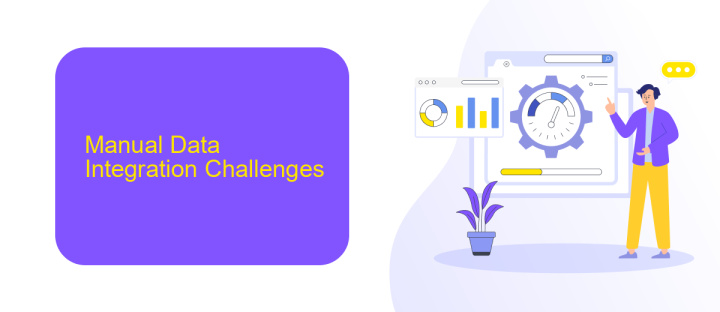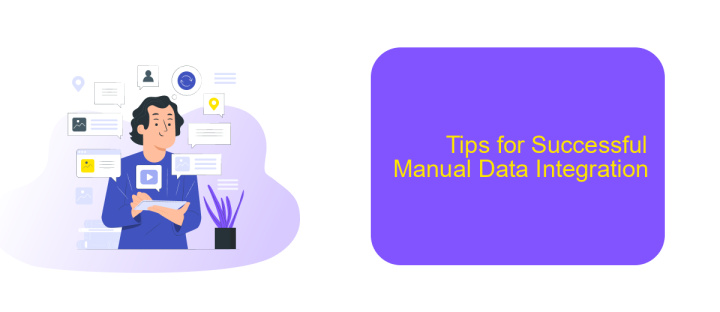Manual Data Integration
Manual data integration is a critical process in many organizations, involving the consolidation of data from diverse sources into a unified format. Despite the rise of automated solutions, manual integration remains essential for handling complex data sets, ensuring accuracy, and addressing unique business needs. This article explores the key steps, challenges, and best practices for effective manual data integration.
Introduction
Manual data integration is a critical process in the modern business landscape, where disparate data sources need to be combined to provide a unified view. This process often involves significant human effort to ensure data accuracy, consistency, and completeness. Companies rely on manual data integration to bridge gaps between various systems and databases that are not natively compatible.
- Ensuring data accuracy and consistency
- Combining data from multiple sources
- Handling data transformation and normalization
- Addressing data quality issues
Despite the challenges, manual data integration remains essential for businesses that require customized data solutions. Tools like ApiX-Drive can significantly streamline this process by automating data transfer between different services and applications, reducing the manual effort required. By leveraging such tools, organizations can achieve more efficient and reliable data integration, ultimately leading to better decision-making and operational efficiency.
Manual Data Integration Challenges

Manual data integration presents several challenges that can hinder efficiency and accuracy in data management. One of the primary issues is the time-consuming nature of manually entering and consolidating data from various sources. This process is prone to human error, resulting in incorrect or incomplete data entries that can affect business decisions. Additionally, the lack of automation means that data updates are not instantaneous, leading to potential discrepancies and outdated information being used for critical operations.
Another significant challenge is the difficulty in maintaining data consistency and standardization across different platforms. Without automated tools, ensuring that data formats, naming conventions, and units of measurement are consistent requires meticulous attention and manual adjustments. Services like ApiX-Drive can mitigate these challenges by providing automated data integration solutions, allowing businesses to seamlessly connect various applications and databases. This not only saves time but also enhances data accuracy and reliability, enabling more informed decision-making and streamlined operations.
Benefits of Manual Data Integration

Manual data integration offers several advantages that can significantly benefit organizations. It allows for a higher degree of customization and control over data processes, ensuring that specific business requirements are met without the constraints of automated systems.
- Flexibility: Manual integration provides the flexibility to adapt to unique data structures and formats, making it easier to handle non-standard or complex datasets.
- Accuracy: By manually overseeing the integration process, organizations can ensure higher data accuracy and consistency, reducing the risk of errors that automated systems might overlook.
- Cost-Effectiveness: For smaller datasets or one-time integration projects, manual methods can be more cost-effective compared to investing in automated tools.
- Immediate Troubleshooting: Manual integration allows for real-time problem-solving, enabling quick adjustments and corrections during the data transfer process.
In scenarios where manual data integration is preferred, tools like ApiX-Drive can still be valuable. ApiX-Drive offers a user-friendly platform that simplifies the integration setup, allowing users to manually configure connections between various applications and services. This hybrid approach leverages the strengths of both manual and automated processes, providing a balanced solution for data integration needs.
Tips for Successful Manual Data Integration

Manual data integration can be a complex and time-consuming process, but with the right approach, it can be managed effectively. One of the key factors for successful integration is to thoroughly plan and understand the data sources and the requirements for the integration.
It is essential to maintain data accuracy and consistency throughout the integration process. This involves regular data validation and cleansing to ensure that the data being integrated is of high quality. Additionally, documenting the integration process can help in troubleshooting and future updates.
- Plan and understand data sources and requirements
- Maintain data accuracy and consistency
- Regularly validate and cleanse data
- Document the integration process
- Utilize tools like ApiX-Drive for smoother integration
Using tools like ApiX-Drive can significantly simplify the manual data integration process. ApiX-Drive allows for easy connection and automation between various services, reducing the manual effort required and minimizing the chances of errors. By leveraging such tools, you can ensure a more efficient and reliable data integration process.


Conclusion
Manual data integration remains a critical task for many organizations, requiring meticulous attention to detail and significant time investment. While it offers the flexibility to tailor data processes to specific needs, it also poses challenges such as data inconsistency and human error. The evolving landscape of data management necessitates a balance between manual efforts and automated solutions to ensure data accuracy and efficiency.
Leveraging tools like ApiX-Drive can significantly streamline the integration process, reducing the burden on human resources and minimizing errors. ApiX-Drive facilitates seamless connectivity between various platforms, enabling automated data transfers and synchronization. By incorporating such services, organizations can enhance their data integration strategies, ensuring reliable and timely data flow while freeing up valuable time for more strategic tasks.
FAQ
What is manual data integration?
What are the common challenges of manual data integration?
How can I ensure data accuracy during manual integration?
What are some best practices for manual data integration?
Can manual data integration be automated?
Time is the most valuable resource for business today. Almost half of it is wasted on routine tasks. Your employees are constantly forced to perform monotonous tasks that are difficult to classify as important and specialized. You can leave everything as it is by hiring additional employees, or you can automate most of the business processes using the ApiX-Drive online connector to get rid of unnecessary time and money expenses once and for all. The choice is yours!

